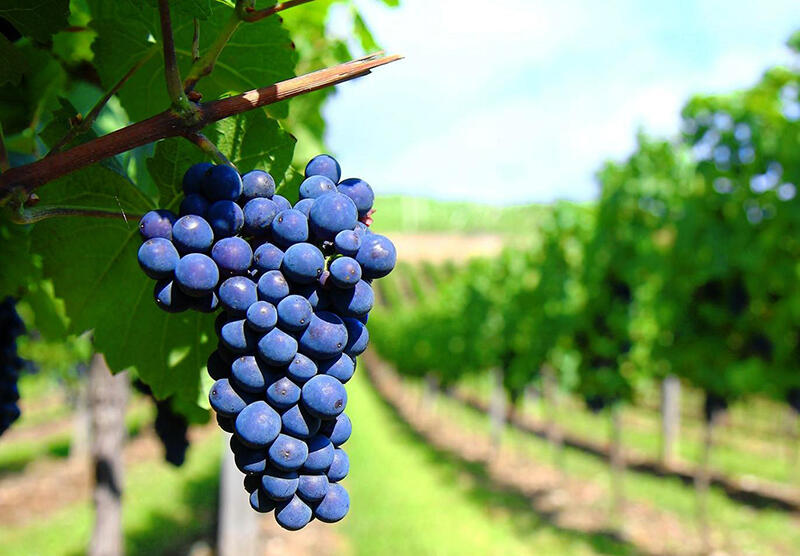Known as the “pinot noir of Italy,” sangiovese offers wine that is lighter in body, nicely acidic and wonderful with food.
They both have cherries in common. Pinot noir, to me, often shows cherry fruit character, while sangiovese reminds me of cherry pits, making it more woodsy and rustic, maybe, than the elegant pinot noir.
By far the most planted grape in Italy, you can find sangiovese in nearly every region with a broad range of expression and price. Because sangiovese is widely produced (like pinot noir), it can be found in uninteresting bulk wine and very high-style, coveted reds. If you know some Italian, or even Latin, you may recognize sangiovese means “blood of Jove.”
In Tuscany, you’ll be hard pressed to put your hand on a red wine that doen’t have some sangiovese in it. It is the dominant grape in Chianti and Chianti Classico. Even the blends — Super Tuscans, Baby Tuscans, blends marked Toscana IGT — nearly always have sangiovese, which I think gives the wine the Tuscan stamp.
Brunello, one of the most coveted wines in Italy, is made from a unique, denser type of sangiovese and produces big, ageable wine.
Wine made from grapes from the designated Chianti Classico zone, the traditional Chianti area, have a black rooster, the gallo negro, on the bottle neck or somewhere else.
Castelli del Grevepesa Clement VII 2011 Chianti Classico smells of dried cherries and exotic spice and a touch of earthy tobacco mixed in with cherry and brandy notes. $13.★★★★. .
One of the biggest names in Tuscany is Frescobaldi, possibly my favorite of the three or so mass producers. The entry-level blend Remole is typically a safe bet. Frescobaldi Remole Toscana 2014 was much improved after decanting, with a deep cherry character, cinnamon and a smooth finish. Meant to be a soft fruity wine, it has no oak aging and blends in some cabernet sauvignon. $12. Special order in Pennsylvania. ★★★ 1/2.
GRADE: Exceptional ★★★★★, Above average ★★★★, Good ★★★, Below average ★★, Poor ★.
DAVID FALCHEK, a Times-Tribune business writer, reviews wines each week.
Source: The Times-Tribune











